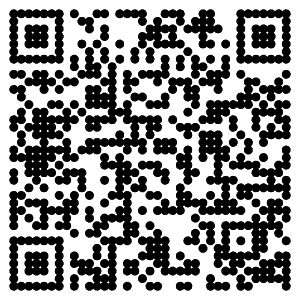
关于平博网页版,平博(中国)平博(中国)
平博网页版,平博(中国)平博(中国)为国家高新技术企业、专精特新“小巨人”企业,专注于脑科学领域的颅脑疾病诊疗产品的研发和生产。目前已经形成包含脑卒中、癫痫、神经重症、晕厥等多种疾病诊断/监测的技术组合解决方案。2022年被深圳市工信局评为深圳市制造业单项冠军企业(产品); 2023 年公司组建的“广东省颅脑超声工程技术研究中心” 通过认定;2023年被广东省工信厅评为省级制造业单项冠军企业(产品)。
为了突破脑电图机设备被进口垄断的现状,平博网页版,平博(中国)平博(中国)于2008年开始集中资源投入脑电图机技术的攻克和研发,于2012年推出第一款数字化多功能脑电图仪,并与多家三甲医院、科研机构及业内专家合作,每年持续研发投入营收的10%不断升级优化。目前客户已遍布全国900余家医院,市场占有率位列常规脑电国产品牌第二名(2023年采招网数据)。
在产学研合作上,公司联合承担了多项国家科技部重点研发计划专项,与多家三甲医院共建“设备创新与转化研发基地”。在临床推广上,公司创办了业内高质量学术平台—— “满天星学苑”,联合国内外专家每年开展近 50 场线上学术直播,助力提升基层医院临床诊疗水平。
了解更多 >满天星学苑
第125期
【直播间】经颅多普勒在ECMO患者中的应用

视频 | 2023.03.28 00:00
第123期
【直播间】 痫性or非痫性-抽搐发作的诊断与鉴别诊断

视频 | 2023.03.28 00:00
第121期
【直播间】窃血频谱的超声价值

视频 | 2023.01.13 00:00
第115期
【直播间】长三角青年医师血管超声病例分享会--上海站

视频 | 2022.11.24 00:00
第116期
【直播间】脑电监测期间的诱发试验

视频 | 2022.11.24 00:00
第113期
【直播间】 脑电监测在癫痫用药剂量调整中的作用价值

视频 | 2022.10.19 00:00
第112期
【直播间】 头颈部血管超声若干问题的专家共识 (颈动脉部分)

视频 | 2022.10.19 00:00
第111期
【直播间】《癫痫综合征的诊断和分类:脑电图篇》之译者读者见面会

视频 | 2022.10.19 00:00
第110期
【直播间】《癫痫综合征的诊断和分类:脑电图篇》之额叶癫痫

视频 | 2022.08.31 00:00
第109期
【直播间】《癫痫综合征的诊断和分类:脑电图篇》之婴儿痉挛

视频 | 2022.08.23 00:00
第108期
【直播间】《癫痫综合征的诊断和分类:脑电图篇》之颞叶癫痫

视频 | 2022.08.23 00:00
第107期
【直播间】《癫痫综合征的诊断和分类:脑电图篇》 之光敏性癫痫

视频 | 2022.08.12 00:00
第103期
【直播间】《癫痫综合征的诊断和分类:脑电图篇》 之进行性肌阵挛癫痫

视频 | 2022.07.18 00:00
第102期
【直播间】昏迷患者的脑电图评估

视频 | 2022.06.27 00:00
第101期
【直播间】脑电图在药物难治性癫痫术前评估中的应用

视频 | 2022.06.27 00:00
【直播间】长三角青年医师血管超声病例分享会--安徽站

视频 | 2022.06.14 00:00
第100期
【直播间】TCD预测高灌注综合征的临床实践

视频 | 2022.05.30 00:00
第99期
【直播间】TCD联合颈动脉超声评估颈内动脉重度狭窄或闭塞

视频 | 2022.05.23 00:00
第九十八期
【直播间】TCD在成人脑积水分流泵压力设定中的指导作用

视频 | 2022.05.14 00:00
第九十七期
【直播间】新书《癫痫综合征的诊断和分类:脑电图篇》之Panayiotopoulos综合征

视频 | 2022.04.26 00:00
第九十六期
【直播间】新书《癫痫综合征的诊断和分类:脑电图篇》之大田原综合征电-临床特点

视频 | 2022.04.11 00:00
第九十三期
【直播间】结构和功能脑思维在癫痫外科中实践

视频 | 2022.03.21 00:00
第九十二期
【直播间】术前评估之幻影迷踪

视频 | 2022.03.14 00:00
第九十一期
【直播间】SEEG在癫痫外科的应用

视频 | 2022.03.07 00:00
第九十期
【直播间】TCD在大脑多模态监测中的作用-Prof.Marek

视频 | 2022.01.12 00:00
第八十七期
【直播间】立体定向脑电图临床解析思路step by step

视频 | 2021.12.13 00:00
第八十六期
【直播间】持续性部分性癫痫的研究进展

视频 | 2021.11.29 00:00
第八十五期
【直播间】MSLT与发作性睡病

视频 | 2021.11.23 00:00
第八十四期
【直播间】2021长白山神经超声高峰论坛之超声无创评估颅内压全国多中心启动会

视频 | 2021.11.08 00:00
第八十二期
【直播间】晕厥大查房之猝死生还,原因未明

视频 | 2021.10.19 00:00
第八十一期
【直播间】晕厥大查房之病窦?起搏器术后仍反复晕厥一例

视频 | 2021.09.26 00:00
第八十期
【直播间】V-EEG的临床应用

视频 | 2021.09.24 00:00
第七十九期
【直播间】浅谈PFO与偏头痛

视频 | 2021.09.13 00:00
第七十八期
【直播间】浅谈发泡试验在心脑联合诊治中的应用

视频 | 2021.09.06 00:00
第七十六期
【直播间】TCD之浅谈锁骨下动脉盗血

视频 | 2021.08.23 00:00
第七十五期
【直播间】晕厥大查房之一波三折话晕厥

视频 | 2021.07.26 00:00
第七十四期
【直播间】头颈联合超声在介入术前评估中的应用

视频 | 2021.07.26 00:00
第七十三期
【直播间】TCD在危重患儿脑功能监测中的应用

视频 | 2021.07.19 00:00
第七十二期
【直播间】神经重症监测:聚焦ICP、CPP、CBF

视频 | 2021.07.08 00:00
第七十一期
【直播间】晕厥大查房之心肌梗死后发生晕厥1例

视频 | 2021.06.21 00:00
第七十期
【直播间】经颅多普勒评估颅内侧支循环

视频 | 2021.06.15 00:00
第六十八期
【直播间】血管超声筛、诊、治、访全链条服务助力临床学科发展

视频 | 2021.06.07 00:00
第六十七期
【直播间】肺动静脉瘘相关性脑梗死的临床及发泡特点

视频 | 2021.06.07 00:00
第六十六期
【直播间】晕厥伴肾脏损害为哪般

视频 | 2021.05.24 00:00
第六十五期
【直播间】TCD术中监测在颅内血管内治疗中的临床应用

视频 | 2021.05.24 00:00
第六十四期
【直播间】广东省中医院神经重症科:AI赋能重症医疗 — 神经危重症脑电智能分析

视频 | 2021.05.24 00:00
第六十一期
【直播间】窦速晕厥不得解,抽丝剥茧溯根源

视频 | 2021.04.25 00:00
第六十期
【直播间】血压忽高忽低,反复晕厥是何故?

视频 | 2021.04.23 00:00
第三十二期
【直播间】迷走右侧锁骨下动脉遇上大动脉炎 宋纺医师 2020.10.25

视频 | 2020.10.28 00:00
第三十一期
【直播间】直立倾斜试验的标准化操作与参数解读 韩珂博士 2020.10.11

视频 | 2020.10.16 00:00
第三十期
【直播间】直立倾斜试验与反射性晕厥 刘文玲 2020.9.27

视频 | 2020.10.16 00:00
第二十九期
【直播间】直立倾斜试验与单独脑血流下降症候群 胡汉华教授 2020.9.20

视频 | 2020.09.27 00:00
第二十八期
【直播间】直立倾斜试验与自主神经调节 刘杰昕教授 2020.9.13

视频 | 2020.09.27 00:00
第二十五期
【直播间】颈动脉重度狭窄或闭塞的定位诊断 徐英勇主任

视频 | 2020.08.26 00:00
第二十四期
【直播间】县域机构的TCD医生,你准备好了吗 余新艳主任 2020.8.16

视频 | 2020.08.17 00:00
第二十期
【直播间】脑颈血管超声联合检查-提高诊断准确率 孟璇主任 2020.7.19

视频 | 2020.07.20 00:00
第十八期
【直播间】血管超声助力卒中中心建设-宋彬彬主任 2020.7.05

视频 | 2020.07.10 00:00
第十六期
【直播间】床旁颅脑超声——重症神经的应用价值 黄立博士2020.05.29

视频 | 2020.06.01 00:00
第十五期
【直播间】神经科医生眼中的TCD-徐蔚海教授 2020.5.24
视频 | 2020.05.25 00:00
第十二期
【直播间】头颈部血管超声常用试验的方法、意义和注意事项 张洁博士 2020.5.10
视频 | 2020.05.11 00:00
第116期
【直播间】脑电监测期间的诱发试验

视频 | 2022.11.24 00:00





